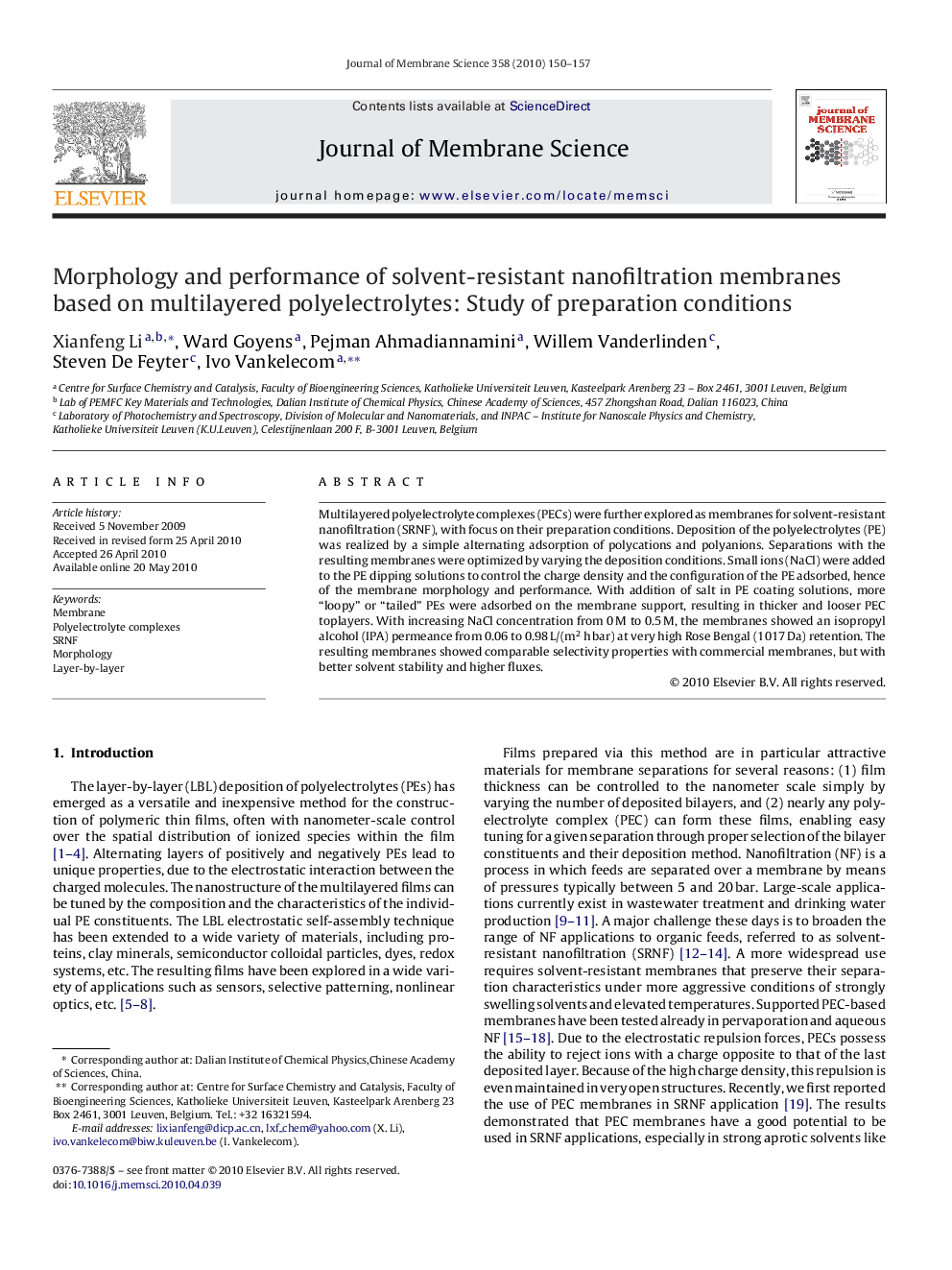| Article ID | Journal | Published Year | Pages | File Type |
|---|---|---|---|---|
| 636375 | Journal of Membrane Science | 2010 | 8 Pages |
Multilayered polyelectrolyte complexes (PECs) were further explored as membranes for solvent-resistant nanofiltration (SRNF), with focus on their preparation conditions. Deposition of the polyelectrolytes (PE) was realized by a simple alternating adsorption of polycations and polyanions. Separations with the resulting membranes were optimized by varying the deposition conditions. Small ions (NaCl) were added to the PE dipping solutions to control the charge density and the configuration of the PE adsorbed, hence of the membrane morphology and performance. With addition of salt in PE coating solutions, more “loopy” or “tailed” PEs were adsorbed on the membrane support, resulting in thicker and looser PEC toplayers. With increasing NaCl concentration from 0 M to 0.5 M, the membranes showed an isopropyl alcohol (IPA) permeance from 0.06 to 0.98 L/(m2 h bar) at very high Rose Bengal (1017 Da) retention. The resulting membranes showed comparable selectivity properties with commercial membranes, but with better solvent stability and higher fluxes.
